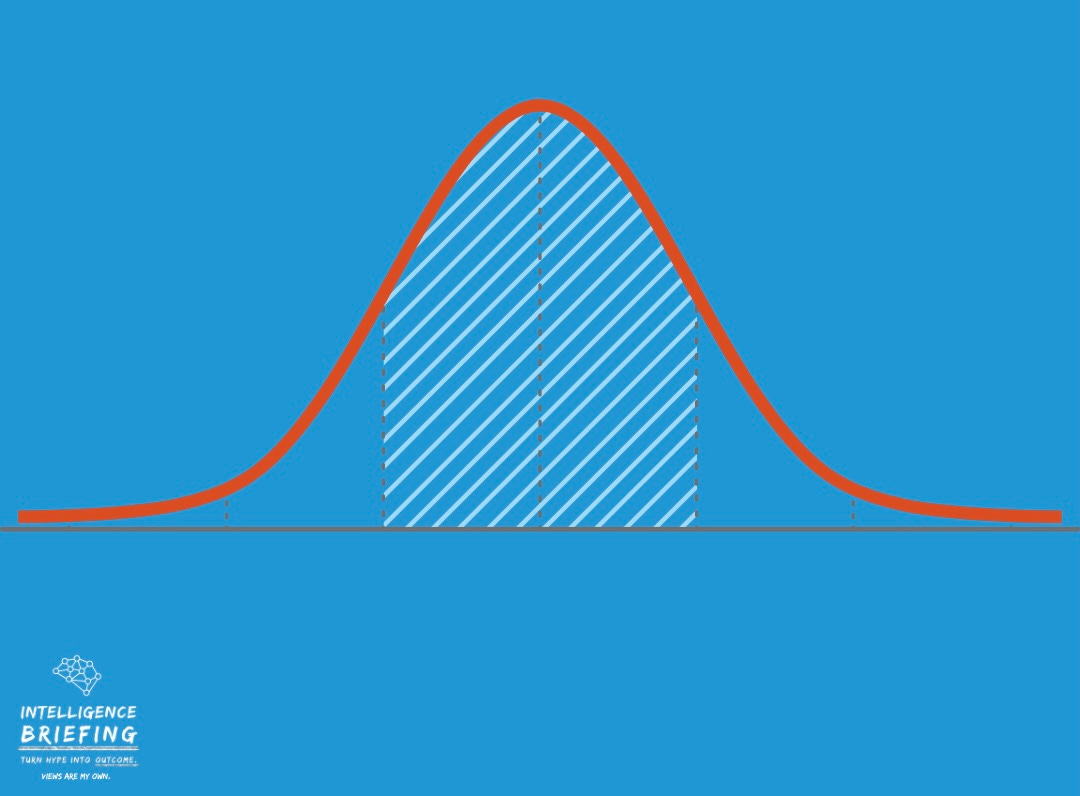Human Skills: The New Differentiator In A World Of AI-Driven Mediocrity?
Exploring The Value Of Repetition And Practice In The Age Of Rapid Uniformity
There’s hardly a week that goes by without a new AI tool, productivity booster, or capability that automates a new task. While AI is promised to drastically increase efficiency, where does it leave human skills? Lately, I’ve had two experiences that are good examples of the spectrum of human-AI skills. They have prompted me to reflect on the unique strengths of each approach. What are truly human skills at a time when AI seems to become more capable every day — and do we even still need them?
Generative AI’s Current Promise
The current promise of Generative AI is simple: to reduce the cost of generating and synthesizing information. This applies to any medium, whether it is text, images, audio, or video. The early rise of ChatGPT & Co. and content generation tools is a great example of these early quick wins. In recent months, we’ve seen the pitfalls, too, from generic and bland output to some that is simply incorrect.
Think of the historically incorrect representations of images that Google Gemini has recently created due to overcorrecting a lack of diversity in the underlying data. The result were images of female popes, among others. Other examples such as Meta AI appears to be depicting Indian men with turbans in the majority of generated images. But, AI repeating existing biases and stereotypes also points to a different issue: the proliferation of the majority as the new default. It’s easy to visualize in images.
Picture the graph of a normal distribution for illustration. The majority of data is in the center. Let’s assume it is pictures of Indian men wearing a turban for the sake of the argument. As models learn from the underlying data, stereotypes like this (turban) manifest themselves in the generated output; the same is true for writing. This situation ultimately leads to overall mediocre results, because there are just not enough exceptional data points (outliers) to outweigh the majority.
Approaches such as retrieval augmented generation (RAG) can mitigate some of these issues. RAG allows users to augment a prompt with current data outside the LLM to generate more relevant output. In this case, the LLM becomes a language engine to disseminate and generate text.
Between AI Tools and Human Skills
The other day, I came across Suno, an AI-enabled music generator. Suno is doing for audio what DALL-E and Midjourney have done for images: prompt in, song out. It’s that simple. So, I had to try it out.
Using a single prompt, anyone can generate songs in any genre within seconds. Like with other Generative AI tools, the more specific and contextual your prompt, the closer the outcome matches your expectations. From there, one can generate dozens of songs quickly and efficiently with the click of a button. Suno ultimately democratizes skills and access to good enough outputs. But it’s not all about using technology and AI.
There’s hardly a week where I don’t play a music instrument, from acoustic to electronic. But I don’t play all of them with the same frequency and proficiency. Even after months without playing, the position of your body, hands, and fingers is still familiar — muscle memory. If you have ever played an instrument, you know what I mean.
As you practice playing your instrument, you get immediate feedback on your skill level, for example when you’re off the beat or hitting wrong notes. Unlike AI-generated music, making music yourself activates all of your senses and demands all your creativity in the moment.
To compare the effort and results, I recorded an acoustic version of Sunday Morning by Maroon 5. It took me about an hour of recording the raw footage and about two hours of editing the clip (and a ton of joy along the way).
Balancing Creativity and Efficiency
As Generative AI repeats the consensus, it is often good enough for quickly achieving output that is mediocre, like a first draft. Generative AI can certainly create lyrics or even a whole song for you within seconds. That might be fine for any occasion where the song or the artist are not the focal point (for now), such as stock audio, background tracks, “elevator music.”
But when it comes to developing your skills, conversing with a tool to generate an output won’t help you develop your senses and abilities like picking up a real instrument. I’m reflecting where this perspective falls on a change agility spectrum:
Resistance to change?
A bit nostalgic?
To be replaced by full on embracing AI-generated works?
To me, the difference lies in genuine human creativity vs. pure efficiency — and not having to be driven by efficiency in all areas of our lives.
As AI continues to further permeate our lives, the distinction of whether and when to rely on human skills vs. AI will grow, blur, and fade. I can’t help but imagine a world where human skills are valued — not just because individuals are pushing back or because they’re feeling nostalgic. But rather because the value of human skills adds authenticity, uniqueness, and ingenuity to create something new, rather than repeating what has been done a hundred times before. And at some point, that’s the differentiation we will bring to the table again in a sea of AI-generated medocrity.
Summary
Generative AI has been taking the world by storm. Businesses have been pursuing quick-win use cases that deliver efficiency gains where humans otherwise spend lots of time — generating, processing, and synthesizing information. But generating information is based on common denominators and the majority of information in data, rather than unique outliers. That’s where human creativity and skills come in. Combined, they can deliver new results faster than before. And while Generative AI can assist us increase our efficiency, there is value in honing our truly human, creative skills in order to make full use of our senses and capabilities.
What skill have you recently developed or improved?
Explore related articles
Become an AI Leader
Join my bi-weekly live stream and podcast for leaders and hands-on practitioners. Each episode features a different guest who shares their AI journey and actionable insights. Learn from your peers how you can lead artificial intelligence, generative AI & automation in business with confidence.
Join us live
May 14 - Randy Bean, Founder of Data & AI Leadership Exchange, will join when we discuss how you can move beyond quick-win use cases for Generative AI.
May 28 - Philippe Rambach, Chief AI Officer at Schneider Electric, will discuss how AI leadership can drive sustainability and energy efficiency in manufacturing.
Watch the latest episodes or listen to the podcast
Follow me on LinkedIn for daily posts about how you can lead AI in business with confidence. Activate notifications (🔔) and never miss an update.
Together, let’s turn HYPE into OUTCOME. 👍🏻
—Andreas











Hi Andreas, would love to have a conversation with you about this and it’s something I’m thinking about lot about at the moment. Could we find a time to chat? Nick
The nature of Large Language Models pretty much guaranties mediocrity. Every output is a regression to the mean. Eventually, AI will do better but not with LLMs.